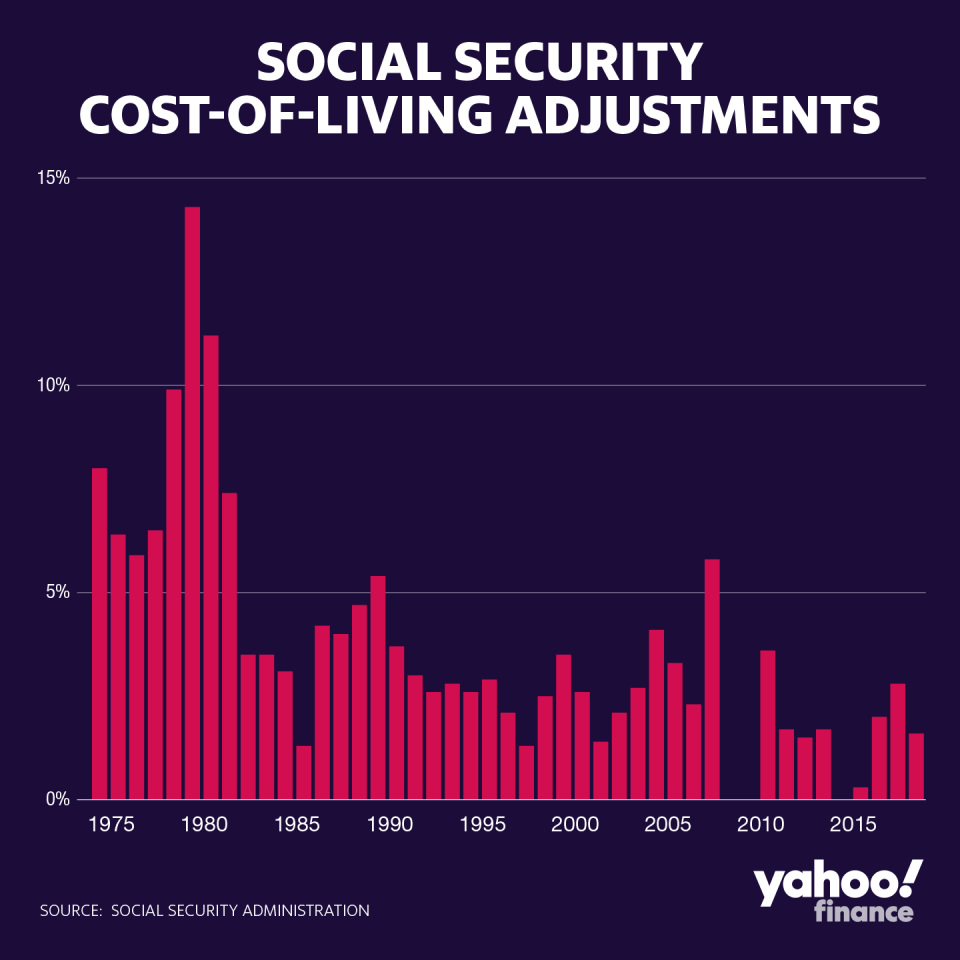The 2020 Social Security increase falls short
The Social Security Administration announced a 1.6% increase in benefits in 2020 for over 68 million people who collect it.
The cost-of-living adjustment (COLA) is less than 2017 and 2018, which saw 2.0% and 2.8% increases, respectively, but higher than 2015 and 2016’s increases, which were less than a percent.
For a retiree earning the average monthly benefit of $1,471, the increase will be $23.54 per month. For many experts, policymakers, and seniors, it’s not enough.
“The reality is that most seniors face cost increases each year even beyond what’s reflected in the current law COLA, since they spend a disproportionate amount of their income on health care costs, which rise faster than general inflation,” said Rep. John B. Larson (D-CT), chair of the House’s Ways and Means Social Security Subcommittee.

“Social Security is the largest source of retirement income for most retirees,” said AARP CEO Jo Ann Jenkins in a statement following the news. “So today’s announcement of a 1.6% COLA increase, while modest, will help Social Security beneficiaries and their families as they try to keep up with rising prices.”
Still, Jenkins noted, the adjustments typically don’t keep pace with increases in the expenses most seniors face. One major problem: the benchmark the Administration uses doesn’t represent the expenses of seniors.
This increase uses the Bureau of Labor Statistics’ consumer price index for urban wage earners and clerical workers (CPI-W) to determine the cost of living adjustment, so the 1.6% number announced Thursday did not come as a surprise.
Health care and prescription drug costs, the AARP said, especially affect seniors’ living expenses, and in the past 12 consecutive years retail drug prices have exceeded the inflation rate. Furthermore, in 2017, drug prices rose twice as fast as inflation.
“The 2020 COLA of 1.6% will do little, if anything, to help the millions of federal retirees who spent their working years serving the public,” said National Association of Retired Federal Employees National President Ken Thomas. “The same people face a 5.6% average increase next year to health care insurance premiums in the Federal Employees Health Benefits (FEHB) program, alone.”

The Seniors League, an advocacy group, noted a similar problem: That premiums for Medicare’s supplemental insurance, also called Medigap, grew twice as fast as the Social Security adjustment.
Rep. Larson, the chair of the subcommittee on Social Security, has proposed using the special consumer price index for seniors, the CPI-E, which would provide more generous increases.
Perhaps the biggest problem in all of this for seniors is that the insufficiency of each annual cost-of-living adjustment compounds. Since the adjustment is adjusted from the year before, the gaps snowball each time. Analysis by the Seniors League found that the benefits are about 17.5% less than they would have been if the cost-of-living adjustment had been a more generous 3%. For the average Social Security recipient, that’s $17,299 less than it would have been.
-
Ethan Wolff-Mann is a writer at Yahoo Finance focusing on consumer issues, personal finance, retail, airlines, and more. He is reporting from Berlin on the Arthur F. Burns fellowship from the International Center for Journalists. Follow him on Twitter @ewolffmann.
Social Security phone scams are now a greater threat than IRS scams
Americans are trying to invest in Denmark’s negative mortgages
‘Flight shame’: A potential headwind for airlines in Europe
Apple Card might finally get people to use Apple Pay
Read the latest financial and business news from Yahoo Finance
Follow Yahoo Finance on Twitter, Facebook, Instagram, Flipboard, LinkedIn, YouTube, and reddit.